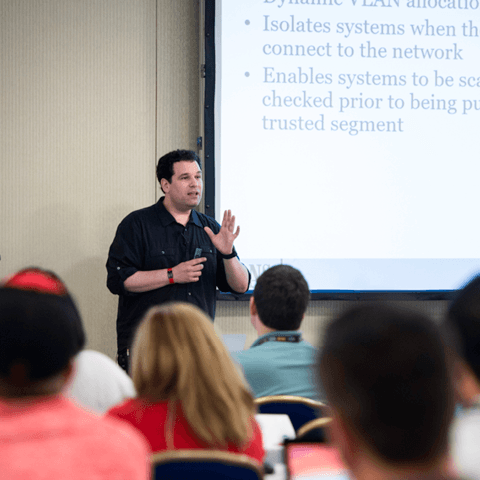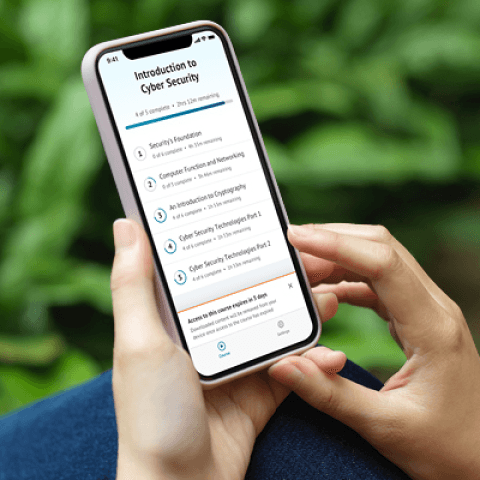SEC595: Applied Data Science and AI/Machine Learning for Cybersecurity Professionals


Experience SANS training through course previews.
Learn MoreLet us help.
Contact usBecome a member for instant access to our free resources.
Sign UpWe're here to help.
Contact UsApply your credits to renew your certifications
Attend a live, instructor-led class at a location near you or remotely, or train on your time over 4 months
Course material is for individuals with an understanding of IT or cyber security concepts
Apply what you learn with hands-on exercises and labs
Master real-world incident response through hands-on labs, AI-powered analysis, and attacker mindset training. AI doesn't change the need for expertise—it raises the bar for what expertise looks like.
The hands-on labs are the main reason why I chose SANS over other providers. The content, difficulty, and details in the labs are all fantastic. The challenges are real!
SEC504 is SANS' flagship incident handling course, equipping you with essential skills to detect, respond to, and neutralize threats across Windows, Linux, and cloud platforms. Through immersive hands-on labs simulating real-world breaches, you’ll master the attacker mindset to strengthen your organization’s defenses. This course delivers immediately applicable expertise in Cyber Threat Intelligence (CTI), modern threat response, and cutting-edge topics, including API security exploitation and defense, leveraging AI for offensive and defensive operations, and protecting against AI-targeted attacks like prompt injections. Whether analyzing malicious code, hunting threats, or responding to sophisticated attacks, SEC504 prepares you for today’s evolving threat landscape.
The latest SEC504 update redefines the industry’s flagship incident handling and offensive operations course for the AI-driven age, integrating artificial intelligence throughout the labs and workbook.
For a detailed breakdown of what's new and how these updates can strengthen your team, download the flyer.


Joshua Wright, Senior Technical Director at Counter Hack Challenges and author of SEC504, has spent over two decades teaching and building tools that help defenders identify and counter real-world cyber threats through practical, hands-on learning.
Read more about Joshua WrightExplore the course syllabus below to view the full range of topics covered in SEC504: Hacker Tools, Techniques, and Incident Handling.
The first section covers building an incident response process using the Dynamic Approach to Incident Response (DAIR) to verify, scope, contain, and remediate threats. Through hands-on labs and real-world examples, you’ll apply this method with tools like PowerShell and learn to accelerate analysis while using generative AI without compromising accuracy.
This section explores attacker reconnaissance techniques, including network scanning, and target enumeration to identify security gaps. You’ll apply these tactics on Windows, Linux, Azure, and AWS targets, then analyze logs and evidence to detect attacks in real time.
This section covers key techniques for password compromises against on-premises and cloud systems, using tools like Legba, Hashcat, and Metasploit to simulate attacks and strengthen defenses. The insights gained help enhance practical defenses and inform incident response strategies.
In this course section we’ll focus on exploiting the many vulnerabilities in web applications including internal and public-facing systems, from on-premises targets to cloud and Software as a Service (SaaS) platforms.
This section covers advanced post-exploitation and AI attacks, teaching how attackers bypass protections, establish persistence, exploit AI vulnerabilities, and exfiltrate data from internal networks and vulnerable cloud deployments. You’ll build analysis skills to detect and respond to these threats and apply them in real-world scenarios.
Our Capture-the-Flag event is a full day of hands-on activity that has you working as a consultant for ISS Playlist, a fictitious company that has recently been compromised.
This role uses cybersecurity tools to protect information, systems and networks from cyber threats. Find the SANS courses that map to the Protection SCyWF Work Role.
Explore learning pathResponsible for managing a portfolio of technology investments that align with the overall needs of mission and enterprise priorities.
Explore learning pathResponsible for collecting, processing, analyzing, and disseminating cybersecurity threat assessments. Develops cybersecurity indicators to maintain awareness of the status of the highly dynamic operating environment.
Explore learning pathResponsible for developing, planning, coordinating, and evaluating cybersecurity awareness, training, or education content, methods, and techniques based on instructional needs and requirements.
Explore learning pathAssesses systems and networks to ensure compliance with policies and identify vulnerabilities in support of secure and resilient operations.
Explore learning pathMonitor the organisation’s cybersecurity state, handle incidents during cyber-attacks and assure the continued operations of ICT systems.
Explore learning pathResponsible for managing the cybersecurity of a program, organization, system, or enclave.
Explore learning pathDesigns and evaluates information system security throughout the software lifecycle to ensure confidentiality, integrity, and availability.
Explore learning pathAdd a GIAC certification attempt and receive free two practice tests. View pricing in the info icons below.
When purchasing a live instructor-led class, add an additional 4 months of online access after your course. View pricing in the info icons below.
Incident response is the most underused aspect in small companies. SEC504™ gives us the ability to help management understand the value.
Great content! As a developer it is extremely useful to understand exploits and how better coding practices help your security position.
SEC504 is a great course and well-organized. The labs are amazing and well-tailored to learning the content. This is my first SANS training course and I am simply amazed at the content thus far. Greatly enjoying it!
SEC504 has been the single best course I have ever taken. It leaves the student prepared and able to understand a broad scope of content in security.

Get feedback from the world’s best cybersecurity experts and instructors

Choose how you want to learn - online, on demand, or at our live in-person training events

Get access to our range of industry-leading courses and resources